Eschewing consensus picks, Editor-in-Chief Alex Heeney and Executive Editor Orla Smith choose the best films of 2019, spotlighting films directed by women, Canadians, and queer filmmakers.
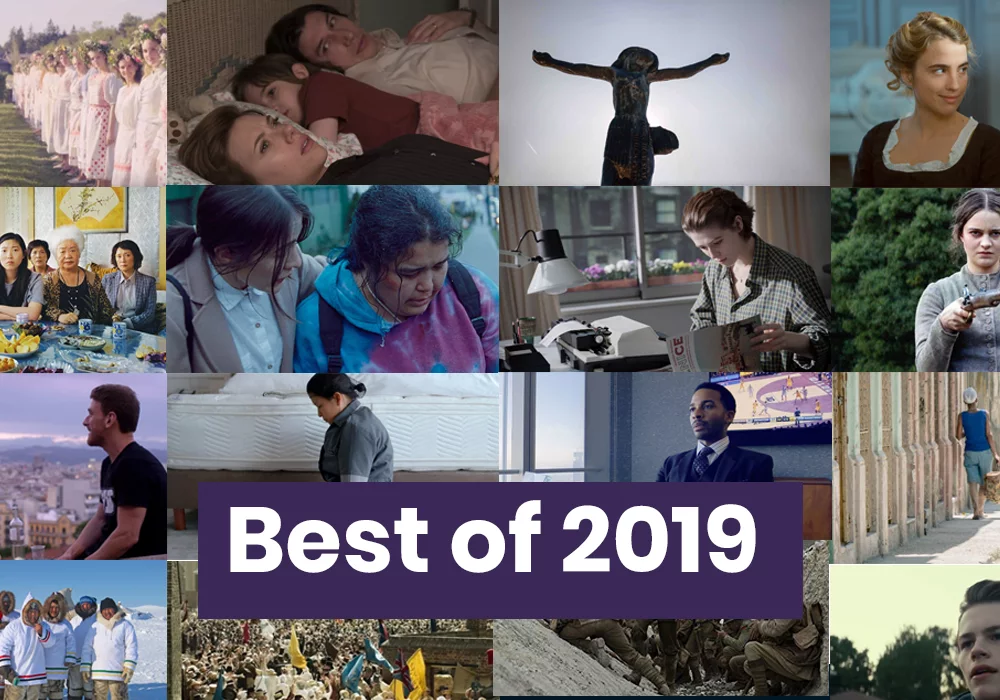
Today, we’re wrapping our coverage of the best films of 2019 with a list of 20 films curated by our Editor-in-Chief Alex Heeney and Executive Editor Orla Smith. You can read their individual lists of the top 10 of the year as part of our critics’ survey about the films of the year. And we made a list of our favourite performances of 2019, which we published on Twitter.
Back in 2019, we released our list of the best films of the decade, which included several films from 2019. We asked critics and filmmakers, including Seventh Row contributors, to submit lists of their favourite films of the decade here. We asked Canadian critics and filmmakers to pick the best Canadian films of the decade. We at Seventh Row made our own list of the best Canadian films of 2019, several of which feature in our list of the best films of the year.
20. High Flying Bird (dir. Steven Soderbergh)
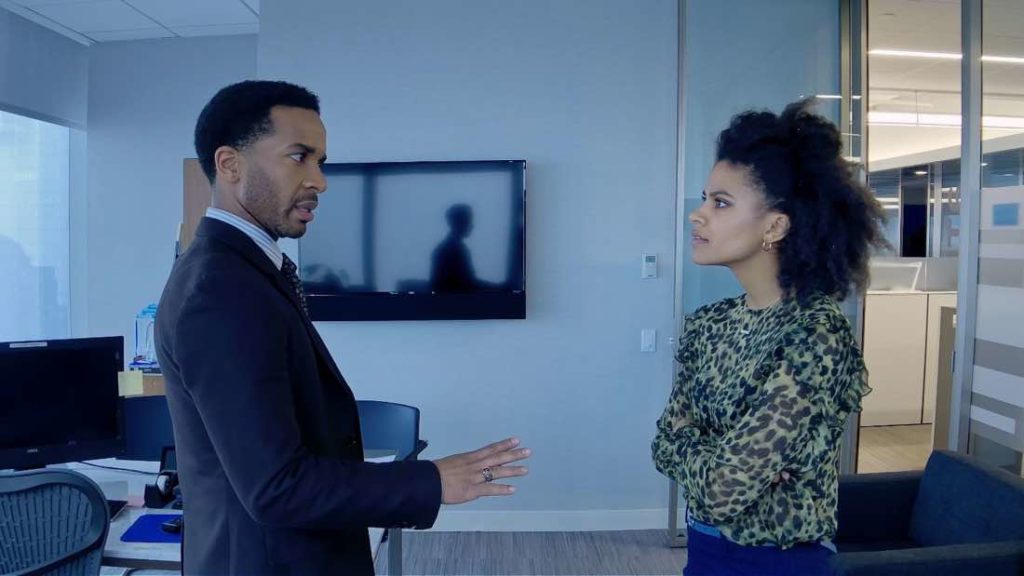
In typical Soderbergh fashion, High Flying Bird is a film about basketball featuring no games of basketball, and a thriller that derives its suspense from the fast-paced, rhythmic dialogue of Tarrel Alvin McCraney (penning his first screenplay since Moonlight). At the centre of this is Ray Burke (the always magnetic and verbally dexterous André Holland), a whip-smart sports agent who understands the systemic racism in pro basketball, and finds himself weaving a complex scheme to fight it — or, at least, that’s what he lets on. But the film, and Ray, are always ten steps ahead of us, and part of the joy of the film is the need to constantly play catch-up: Ray is in a bind because of the NBA lockout, and somebody needs to stop it or he could lose his job. Helping him out is his much-too-smart-to-be-in-this-job assistant and mentee, Sam (a luminous Zazie Beetz), as they persuade one of Ray’s clients (Melvin Gregg) to take unexpected action.
This is Soderbergh’s second film shot on an iPhone, and it’s beautiful where Unsane was deliberately ugly — and not just because Soderbergh keeps his camera trained on the always fascinating and gorgeous Holland, here wearing well-tailored suits and cashmere turtlenecks. Soderbergh’s mobile camera keeps us in the action, and also serves as a smart meta device in a story about challenging systemic norms with new media; the fact that it was made to stream on Netflix is also fabulously meta. As much as the film is about Ray’s and Sam’s ingenuity, it’s also an indictment of unfair racial power dynamics in professional sports, and a subtle call to the audience to get woke. It’s also a hell of a lot of fun. — Alex Heeney
19. The Chambermaid (dir. Lila Avilés)
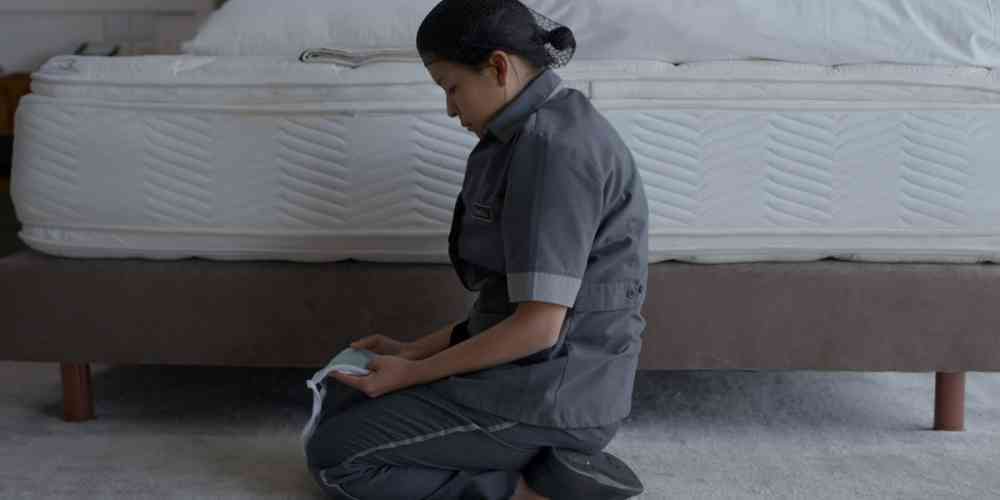
Lila Avilés’ debut film asks us to see an occupation hotels try to make invisible: maids. Eve (Gabriela Cartol) is a young single mother who dedicates herself to her job as a maid at an upscale hotel in hopes of gaining a favourable promotion to the luxury floor. The entire film enfolds within the glass tower of the hotel, the camera exploring both the opulence of the public side and the grunginess of the maintenance and cleaning floors. Often told through long takes, The Chambermaid emphasizes the simultaneously alienating and highly personal experience of cleaning up other people’s mess. But even when maids and guests interact, as is the case when Eva is asked to watch a rich Argentinian woman’s baby for a few minutes, no human bond develops. The rich woman’s expectation of the role leaves her incapable of seeing Eve as a person, instead of as a maid. Avilés challenges us to look beyond the uniform and pay close attention to the lives of workers cleaning up the wealthier’s waste. — Brett Pardy
18. Queen of Hearts (dir. May el-Toukhy)

This year’s less talked about standout film for me was May el-Toukhy’s Queen of Hearts, a Danish drama about a high-powered middle-aged lawyer who begins an affair with her 17-year-old step-son. It’s also, oddly, the third excellent incest-adjacent film in four years (alongside Homesick and Mammal) to screen in the World Dramatic competition.
Told entirely from the protagonist’s perspective — there isn’t a scene without her — Queen of Hearts presents us with a flawed and difficult woman, Anne (Trine Dyrholm), whose desires are real, but whose choices prove increasingly morally ambiguous. As a woman who works cases to help abused children and women, she knows what holds up in court and what doesn’t. Her clients are, initially, presented to us as proof of her compassion, but these scenes take on a more sinister tone as the film progresses and you wonder just how calculated her affair was and how carefully she chose her victim.
Shot in icy blues and whites and among the hard edges of a modernist home, there’s nothing very comfortable about this environment; el-Toukhy doesn’t want us to get cosy with our morally slippery leading lady. — AH
17. One Day in the Life of Noah Piugattuk (dir. Zacharias Kunuk)
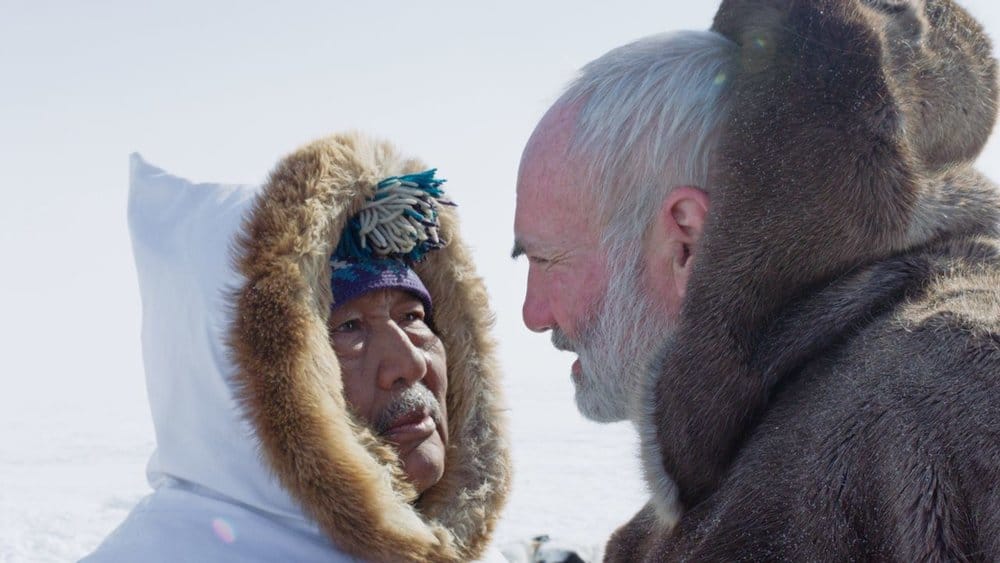
Based on the real encounter between Inuk leader Noah Piugattuk and a Canadian government official in the 1950s, Kunuk’s film is the story of colonialism in process. The centrepiece of the film is an hour-long exchange, which involves communication barriers with things lost in translation between the two men. Kunuk’s blocking renders this verbal jousting match a battle for power, and offers the terrifyingly depressing sense that the battle was won, before it began, by the white official. — AH
16. Marriage Story (dir. Noah Baumbach)
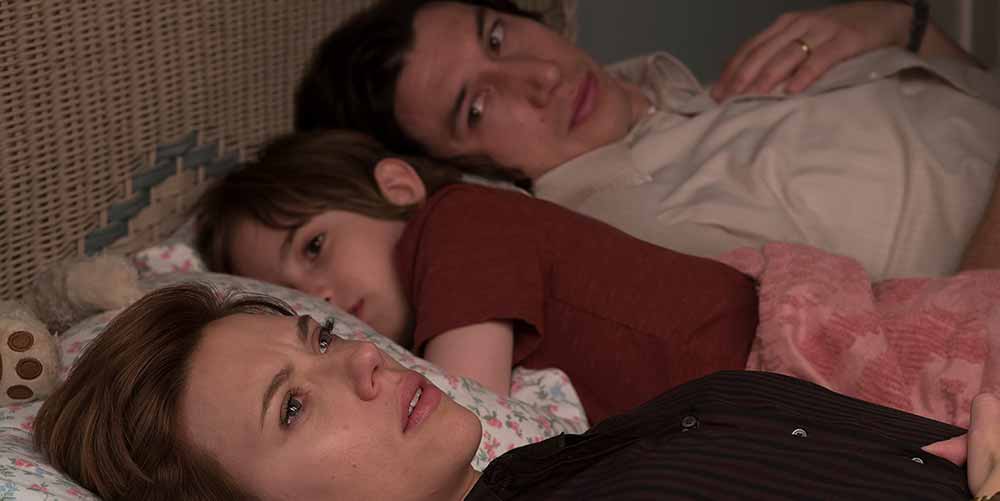
With a title like Marriage Story, which implies universality, it’s notable how specific Noah Baumbach’s film is. Transparently inspired by Baumbach’s own divorce from actress Jennifer Jason Leigh, the characters in the film are also a director and his actress muse who have a son together, just like Baumbach and Jason Leigh. The characters in the film are angry and bitter, but Marriage Story, is not bitter but confessional — apologetic, even. He reflects even-handedly on where both sides went wrong, pulling no punches when it comes to deriding himself. What results is a gruelling but ultimately optimistic film about the horrors of divorce and how hard it is to learn, grow, and move on… READ MORE – OS
15. Diane (dir. Kent Jones)
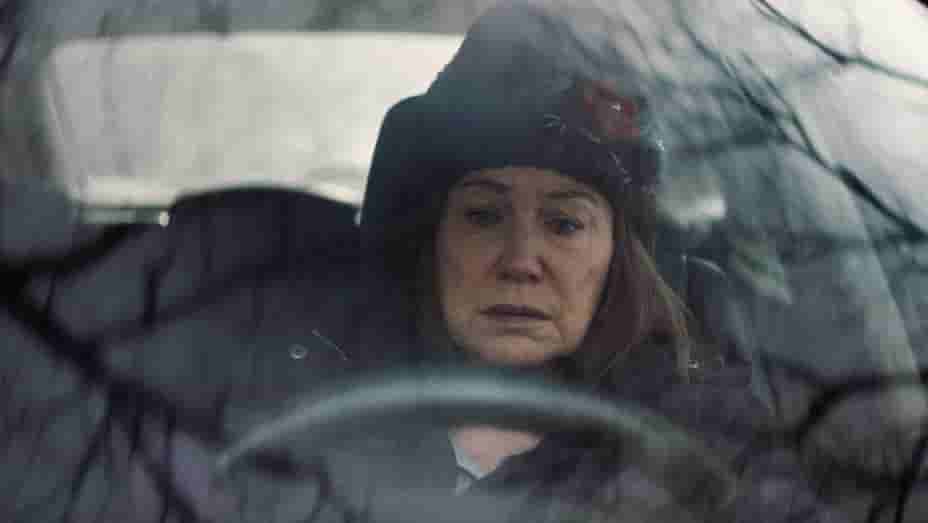
It’s not until well into Diane that we see our eponymous heroine (Mary Kay Place) in her own home. Mostly, the film consists of scene after scene of her helping others — her sister who’s in the hospital with cancer, her drug addicted son (Jake Lacy), the homeless people in the soup kitchen where she works — each scene bookended with simple footage of her driving from place to place. The rhythm of Diane’s life is established: a steady but exhausting one that leaves not a beat for her to relax and think about herself. This seemingly simple structure builds almost imperceptibly into a larger thesis statement on death and living with guilt.
Despite the strictly naturalistic register of most of the film, there are a few moments of near-surreal beauty, such as a Diane dancing mournfully by herself in a bar, or an intense dream sequence that heartbreakingly recalls how life felt much more joyful and immediate in Diane’s youth.
Diane’s main form of self-expression is the poetry she begins to write. We see copies of Emily Dickinson’s work lying on her bedside table, which draws a line between these two women with rich inner lives, but tragically, no healthy outlet. Kay Place’s performance is the brilliant centre of it all, making visible the inner life of such a quiet woman. – OS
14. The Body Remembers When the World Broke Open (dir. Kathleen Hepburn, Elle-Máijá Tailfeathers)
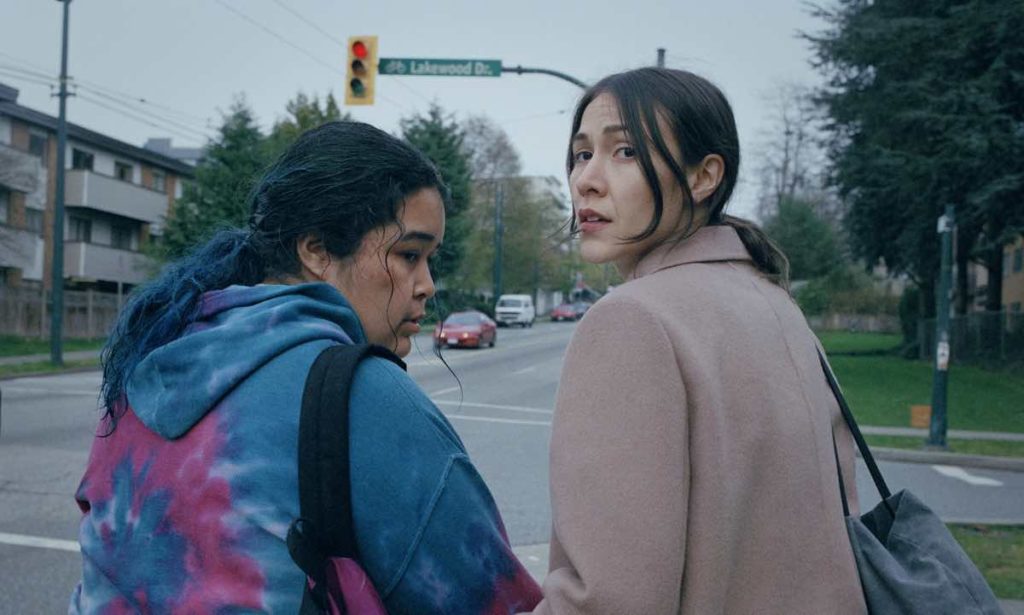
The Body Remembers follows, in nearly real time, the efforts of an Indigenous middle-class woman, Áila (Elle-Máijá Tailfeathers), to help a pregnant young women, Rosie (Violet Nelson), escape domestic abuse. However, while Áila initially comes to Rosie’s aid as an act of solidarity, she quickly learns that a variety of intersectional factors impede the women’s relationship. Despite both being Indigenous women, their interactions show two very different viewpoints and life experiences… READ MORE – BP
13. Clemency (dir. Chinonye Chukwu)
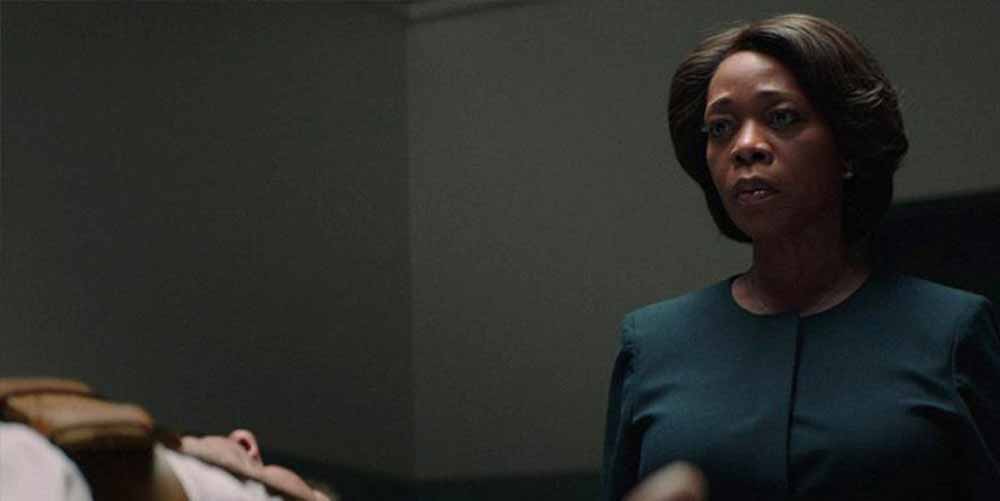
Chinonye Chukwu’s Clemency, a harrowing death-row drama, won the Sundance Grand Jury Prize. At my TIFF press screening, there were several walkouts — not for lack of quality, I’d guess, but because of how brutally hard it is to watch. The film begins with Alfre Woodard’s Bernadine Williams, a death-row prison warden, on the day of her eleventh execution. In uncomfortable detail, Chukwu presents the process of a modern day execution: the torturous waiting, the bureaucracy, strapping the prisoner down, finding a working vein, and everything that can go wrong in the process… READ MORE – OS
12. Giant Little Ones (dir. Keith Behrman)
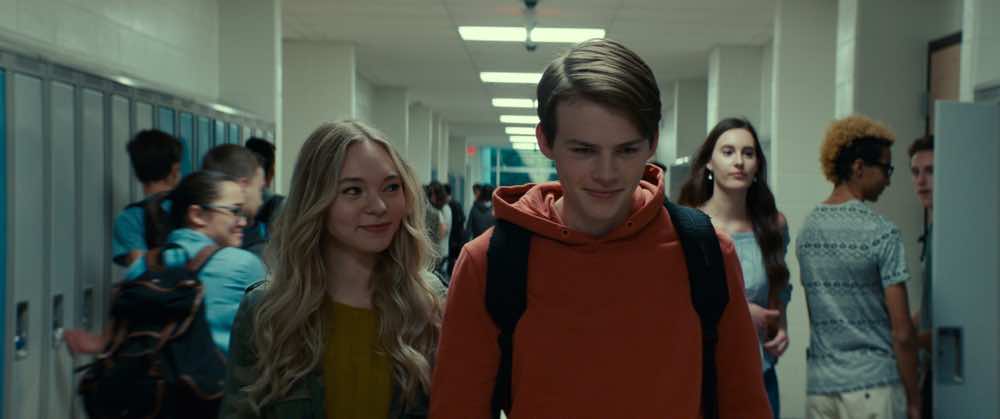
17-year-old Franky (Josh Wiggins) occupies a comfortable in-between of high school life. He’s well-liked but far from the centre of attention. He watches a gay kid on his swim team get bullied, looking guilty yet doing nothing because he’s safe as he is: sensitive and quiet, yet adept at fitting in with a group of bros. Life is all lazy days in school classrooms, happy and aimless bike rides through suburban streets with his best friend Ballas (Darren Mann), and making out with his girlfriend on the couch. Franky appears relatively content. But about a third of the way through Keith Behrman’s Giant Little Ones, something happens that changes everything.
What unfolds is one of the most warm, thoughtful, and patient explorations of teen sexuality that the coming-of-age genre has to offer. In fact, the film flips the genre’s typical arc: most teen protagonists start out lost and eventually realise who they are. Franky starts the film pretty sure of who he is — but he learns to open himself up to not knowing. It’s a beautiful notion that ought to be espoused more often, and chiefly, it’s delivered here in a highly entertaining package, fit with a great soundtrack, compelling characters, and one unforgettable dick joke. — OS
The film features in our 2019 Canadian Cinema Yearbook, which includes an interview with the writer-director Keith Behrman.
13. Pain & Glory (dir. Pedro Almodóvar)
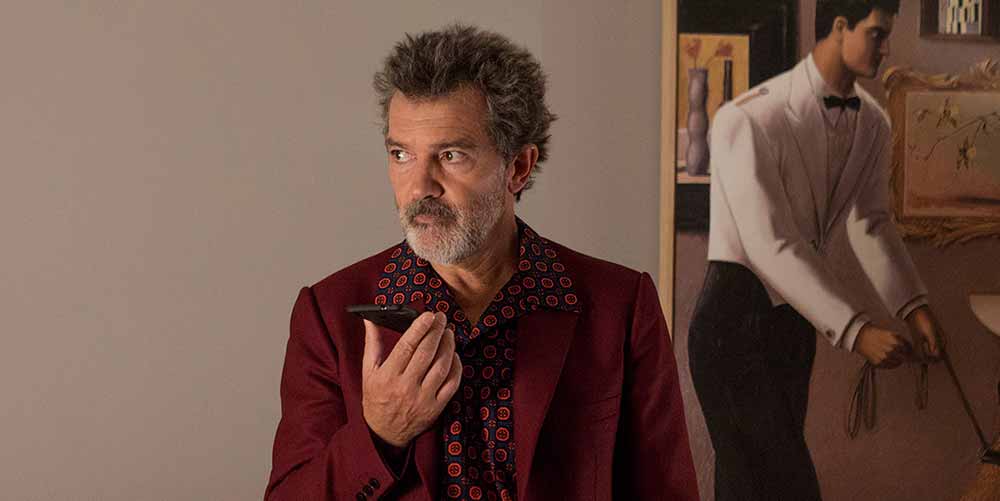
The cinema of Almodóvar has always been a melange of influences, from Fassbinder and telenovelas to Doris Day musicals. The director has kept hold of his post-Franco punk spirit, even into his development into a mature director renowned on the world stage. With Pain and Glory, which won raves at Cannes and a Best Actor trophy for Antonio Banderas, the titan of Spanish cinema has delivered a rosetta stone for those influences, and questions what turns that inspiration into the impulse to create… READ MORE – Ben Flanagan
10. Jeune Juliette (dir. Anne Émond)
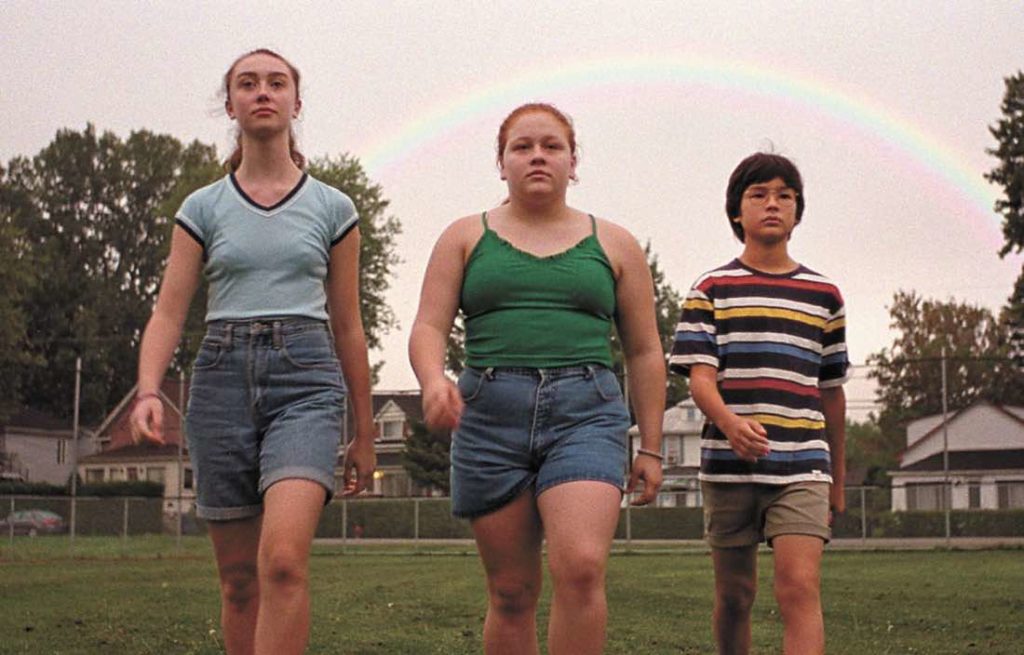
Anne Émond’s fourth feature, Jeune Juliette, is an absolutely delightful and body positive teen comedy about 14-year-old Juliette, a smart and savvy outsider who is coming to terms with her own identity and how people treat her because she is plump. The film is also unlike anything Émond has made so far — the verité style one-night romance, Nuit #1(2011); the heart-wrenching family drama about cycles of suicide, Our Loved Ones (2015, which was one of Seventh Row’s 50 favourite films of the decade); and the highly stylized and entirely unconventional biopic of novelist Nelly Arcan, Nelly (2016) — but is every bit as accomplished.
The film puts us inside Juliette’s headspace as she doesn’t just “hate the sport” but doesn’t even try in gym class, befriends and then alienates and then makes up with an autistic boy, deals with her best friend’s crush on her, and realises that the boy of her dreams is actually disappointing. Juliette makes some horrible but entirely relatable mistakes, but Émond keeps the film buoyant throughout with a rich colour palette and clipped pace. — AH
9. The Nightingale (dir. Jennifer Kent)
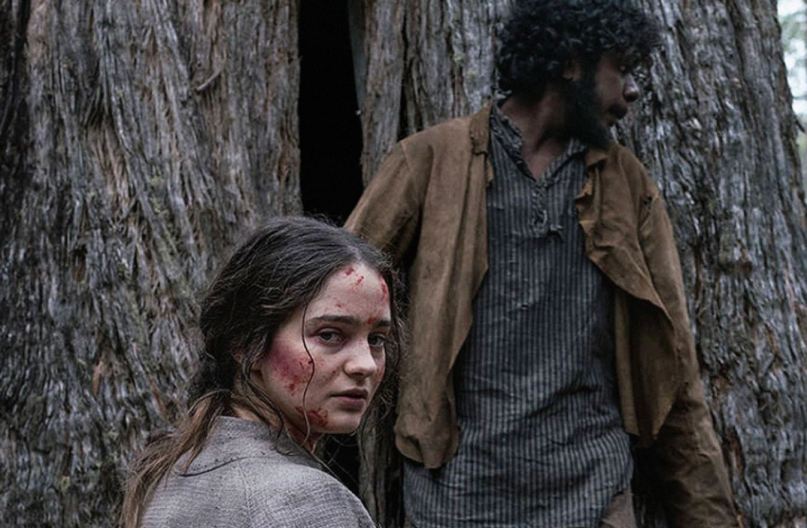
Set in Australia in 1825, the film follows a young Irish convict, Clare (Aisling Franciosi), on her mission of revenge through the Tasmanian wilderness. She’s chasing after the British officer (Sam Claflin) who brutally raped her and committed great violence against her family. Clare enlists the help of Billy (Baykali Ganambarr), an aboriginal man, as her guide.
This is only Kent’s second film, but she’s already proven herself as a master craftsman after her feature debut, The Babadook. The Nightingale takes after her first feature: it’s so carefully composed and richly atmospheric, it’s chilling to the bone even if it’s not explicitly a horror film. But you can see Kent’s horror roots in the film’s harrowing dream sequences, in which Clare is surrounded by a dark abyss and sees faces looming from the shadows. Kent has a way of shooting these scenes so they don’t feel tacky or cliche, but, instead, genuinely horrifying and earned. It’s in the atypical way she moves her camera and the strange and unexpected details in the sound design, which invoke a deeply etched sense of dread and disorientation. Horror is all about the fear of the unknown, and Kent’s way of putting us into Clare’s confusion and isolation make these sequences all the more terrifying. — OS
8. 1917 (dir. Sam Mendes)
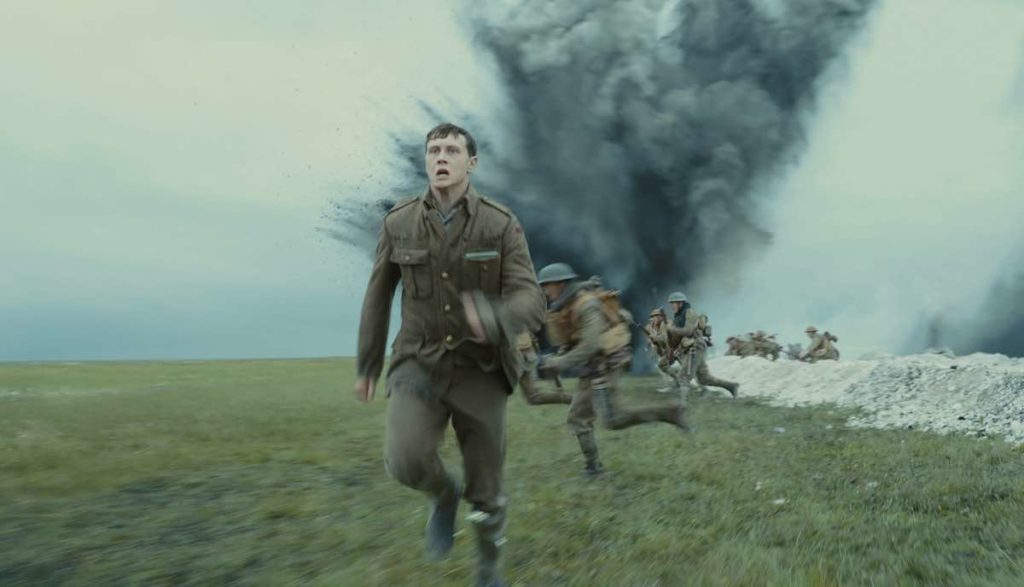
“A chamber drama tucked inside an exquisitely rendered war epic, 1917 is more heartstopping thriller than traditional war movie. In the wake of a strategic German retreat during World War I, two Lance Corporals — the wet-behind-the-ears Blake (Dean-Charles Chapman) and the more cautious, and experienced Schofield (George MacKay) — must deliver a message to the front line in the next few hours to prevent a massacre. The film unfolds in two hours of real time to keep us as tense as our heroes are. The real-time focus is heightened as the film is shot to look like one single, uninterrupted take: Blake and Schofield must keep moving forward, the pressure never letting up, and we stay with them all the way, never granted the reprieve of a cut”…READ MORE – AH
7. End of the Century (dir. Lucio Castro)
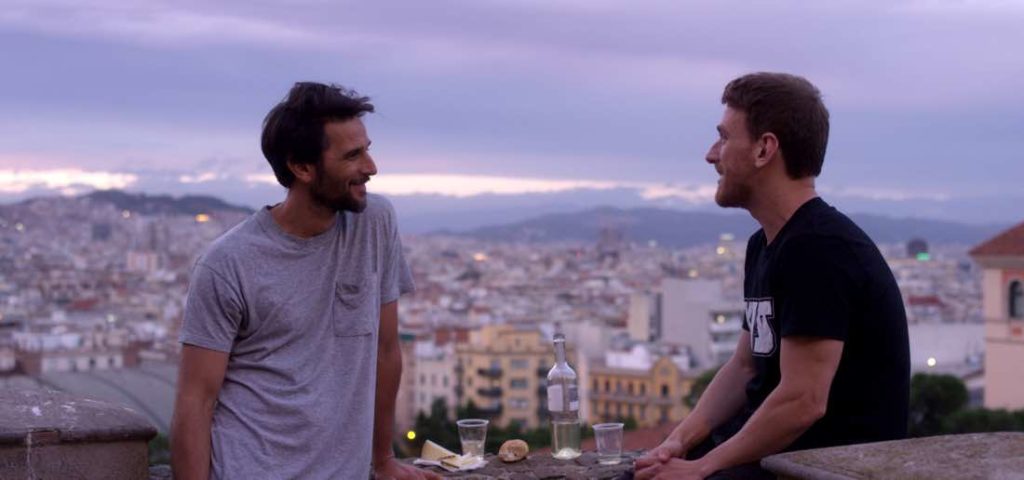
Lucio Castro’s directorial debut, End of the Century, starts out like an Iberian sequel to Weekend, only to become a kind of post-modern exploration of love, sex, intimacy, and possible lives. Two men repeatedly cross paths in Barcelona and eventually, after what one of them refers to as a “chess game” of sending signals, fall into bed together. Ocho, an Argentinian poet (Juan Barberini) who makes his living in advertising in New York City, is renting an AirBnB in the city for a vacation; Javi (Ramon Pujol) is a local. Intimate conversation follows the sex, and the long, uninterrupted takes feel like familiar territory. But when Javi drops that they have actually met before, we suddenly cut quickly back in time for the film’s second act: to that meeting a decade previously, when they spent a day together, sharing stories, looking at art, and possibly going to bed together.
Castro is constantly surprising us, with each new act deepening the characters and the film’s philosophical explorations. Just when we expect Castro to return us to the present, he zags again, and we suddenly find Javi and Ocho living in the now homey and lived in AirBnB apartment (fridge filled, signs of nesting) with a child, yet neither of them are older. Have we jumped forward in time? Or was the film’s first act a look at what their lives could have looked like had they been only a passing fancy to one another? There’s a kind of dream logic to this film about hopes, dreams, and shared lives, which I won’t spoil. But suffice to say, you’ll leave the film arguing about what it all meant, knowing the characters like friends, and desperate to watch it all again. — AH
6. The Souvenir (dir. Joanna Hogg)
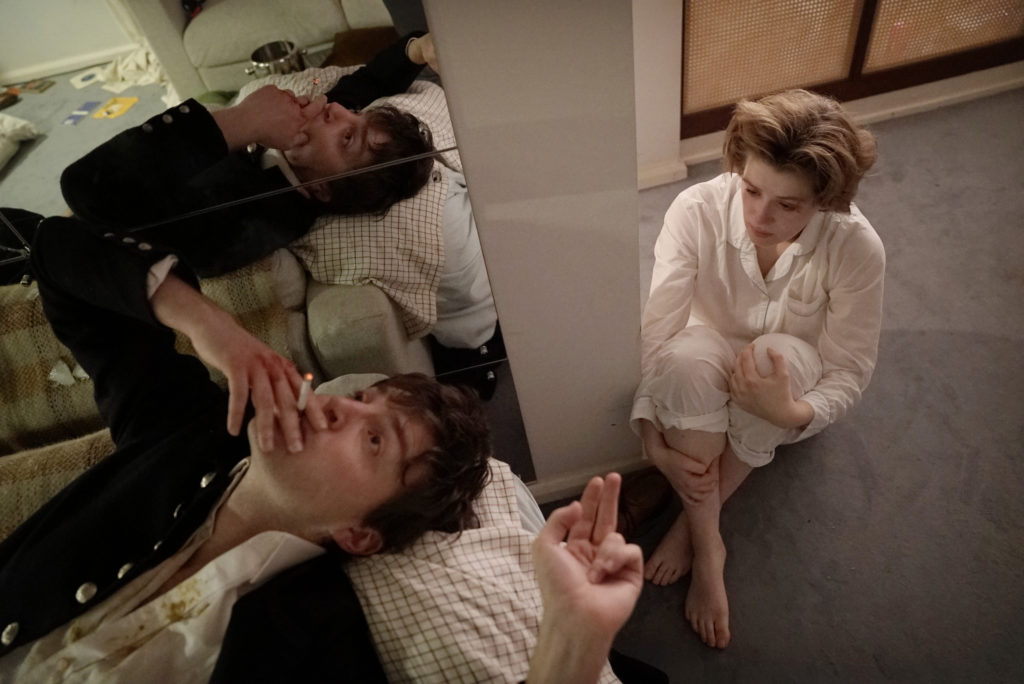
2019 was the year that Joanna Hogg finally ‘broke out.’ The British director has been making brilliant films about the British upper classes for over a decade, starting with Unrelated (2007) through to Archipelago (2010) and Exhibition (2013). Each skewers the privileged, narcissistic behaviour of posh Brits in a hilarious, cringe-worthy way, while always keeping the humanity of the characters in mind.
It makes sense that The Souvenir is Hogg’s most popular film to date as it’s also her most personal, and therefore, her least scathing and most forgiving. Honor Swinton-Byrne plays Julie, a fictionalised version of Hogg when she was a film student in 1980s London. It’s a retelling of Hogg’s turbulent relationship with a heroin addict (Tom Burke), exploring how it shaped her as a filmmaker and as a person. The film beautifully tracks Julie’s growing confidence and her self-actualisation; Hogg’s signature precise framing has never been a more effective cinematic tool, with Julie drifting further toward centre frame as her story progresses.
The Souvenir is a meticulous piece of work worthy of the discussion and dissection its been getting since its Sundance premiere. Our contribution to that dialogue is our recent ebook, Tour of memories: The creative process behind Joanna Hogg’s The Souvenir. This is the first book ever dedicated solely to Hogg’s work — and it’s about time. There’s so much to learn from her razor-sharp filmmaking: her improvisational process of finding the characters during the shoot is fascinating and unique, and it’s all uncovered in our interviews with Hogg’s entire creative team. They discuss what makes The Souvenir so special. — OS
5. Peterloo (dir. Mike Leigh)
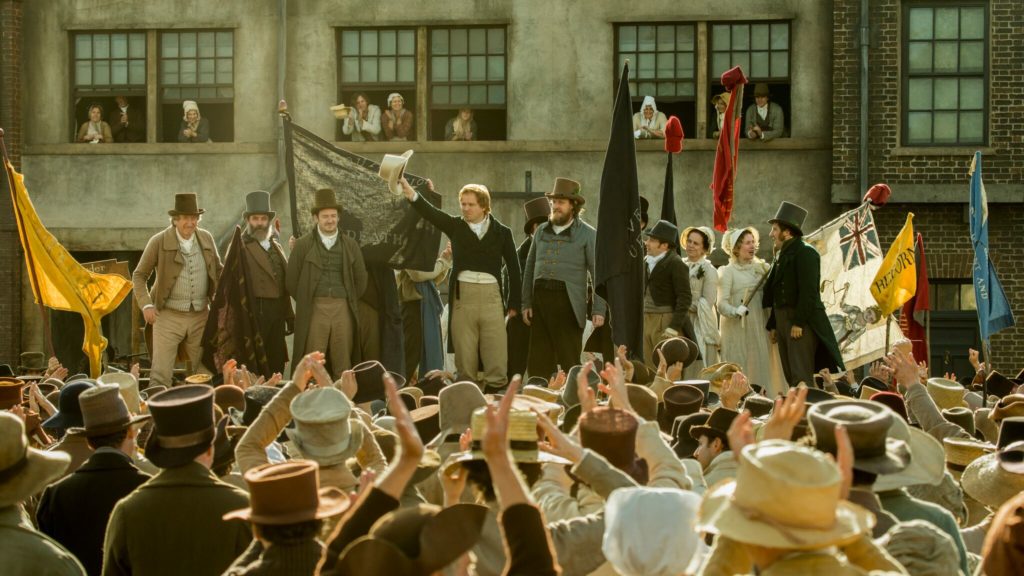
Mike Leigh’s Peterloo is a rare story about the fight for a fairer democracy: one of carnage rather than triumph, one that ends with tragedy and unfinished labour rather than success and social change. In other words, despite its broad canvas, including more than a hundred characters acting out historical events, Peterloo is every bit a Mike Leigh film: peppered with flawed, complicated characters, inspirational because it is a story of recognizable people, and nothing like the silk-swishing period pieces that are the staple of British cinema.
Peterloo is a story of grassroots political organizing, of political change as the product of many individuals pulling together. Leigh introduces two distinctive groups — the ruling upper classes and the working classes — as a means of offering insight into two opposing worldviews. The authoritarian upper classes suffer from a sort of groupthink. They are uniform in opinion, perspective, and even dress. By contrast, the working classes (including those same soldiers, who have now come home) are strongly individuated and organize themselves in an inherently democratic fashion. As a group, the activists are united in working toward the same goal, but they are still not afraid to disagree. By showing us all the moving pieces in this movement, Leigh emphasizes the collective organizing that went into bringing it to life.
In Leigh’s script, the heroes of the war who lived through Waterloo survive only to be killed at Peterloo by the country they were fighting for. Yet the film ends not with the massacre, but with the seeds of what it will lead to. Despite the tragedy of Peterloo, I left the theatre invigorated about not just the need for change, but the feeling that spurring that change is something accessible to all of us. — AH
4. Wild Nights with Emily (dir. Madeleine Olnek)
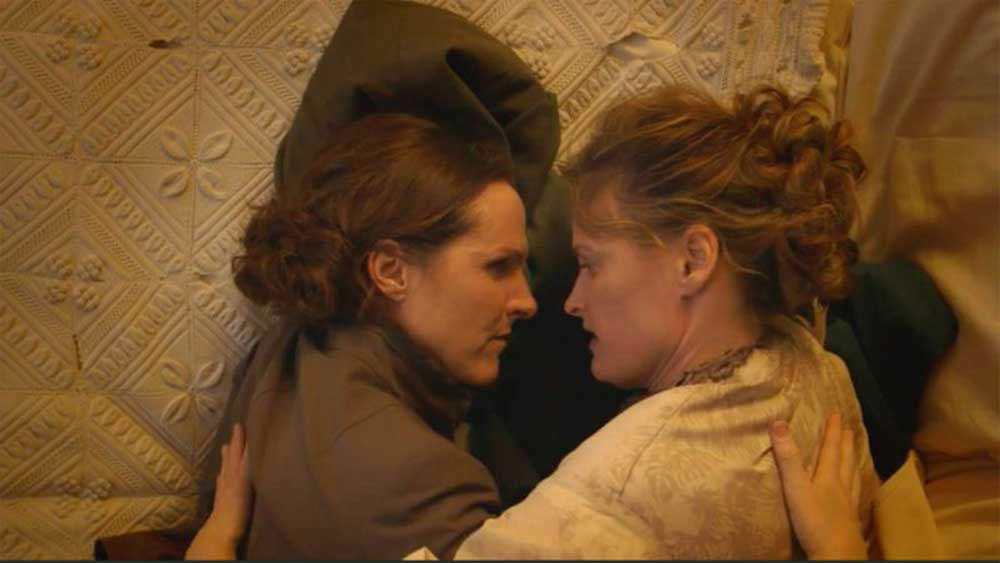
In the last few years, Emily Dickinson has suddenly become a major preoccupation of filmmakers. Despite being a beloved poet, her life had never been depicted on screen — until Terence Davies’ 2016 Dickinson biopic, A Quiet Passion, which we explored in a Special Issue. Since then, we’ve had the (in my mind superior) Wild Nights with Emily, and a TV series starring Hailee Steinfeld is on its way. There seems to be something about Dickinson’s reclusive but brilliant life that speaks to the here and now. Perhaps, in a time of increased affirmative action for women in the creative arts, we’re attracted to the tragedy of a genius woman whose work wasn’t appreciated until after her death.
Wild Nights, unlike A Quiet Passion, acknowledges the overwhelming evidence that Dickinson (here played by Molly Shannon) was a queer woman. Restored letters reveal that she and her brother’s wife were lovers for decades. Dickinson is often portrayed as a staid, antisocial woman who rarely left the solitude of her room. However, director Madeleine Olnek attempts to rewrite this narrative. Her Dickinson is full of life: she’s prickly, but also funny and, of course, gloriously intelligent — all is true of Olnek’s film, too. Although it is carefully period accurate, the film feels more modern than Davies’, perhaps due to its frank approach to its central queer relationship. Dickinson and her lover’s relationship is not depicted demurely or treated as transgressive. They’ve been together for decades, so they speak to each other and touch each other with the casual familiarity of any married couple. Crucially, the film doesn’t turn Dickinson into a purely tragic figure, focusing on the relationship that brought joy to her life. — OS
3. Sergio & Sergei (dir. Ernesto Daranas)
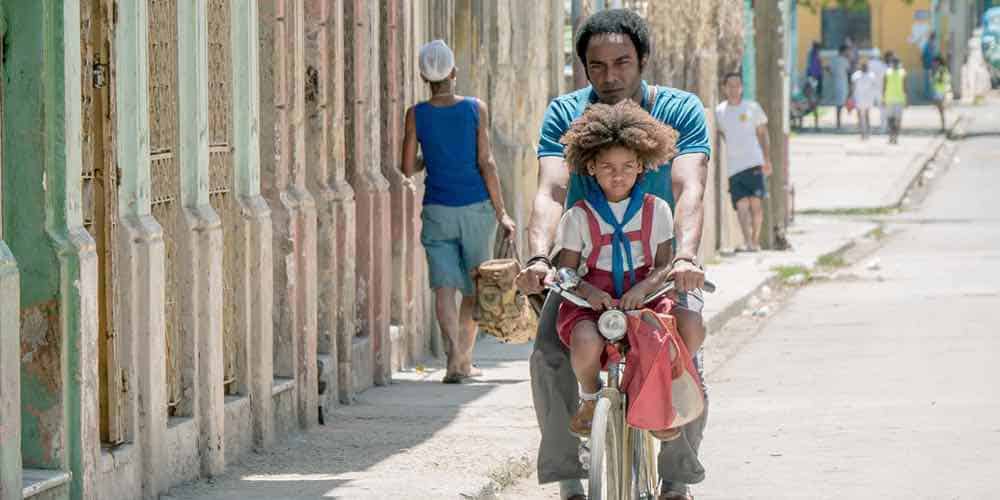
Sergio & Sergei is a warm comedy about connecting across borders and a critique of totalitarian regimes. Sergio is a Marxist Philosophy Professor in Havana and a ham radio enthusiast. Just as the USSR is dissolving, he unexpectedly makes radio contact with Sergei, the only cosmonaut still on the Russian Space Station MIR, and they become friends. Both suddenly find themselves isolated from the rest of the world: Cuba has lost its closest ally while Sergei finds the borders on the ground have changed in ways that seem arbitrary from outer space. Meanwhile, Cuban government agents are eavesdropping on Sergio’s transmissions when they discover he not only has an American friend (an Apollo conspiracy theorist) but a Russian one — at this time in politics! Hilarity ensues, but director Ernesto Daranas Serrano pays close attention to how political events impact day-to-day lives, focusing on the humanity of his characters and the importance of their relationships. It’s a crowd-pleasing delight. — AH
Listen to our podcast on Sergio & Sergei here.
2. Portrait of a Lady on Fire (dir. Céline Sciamma)
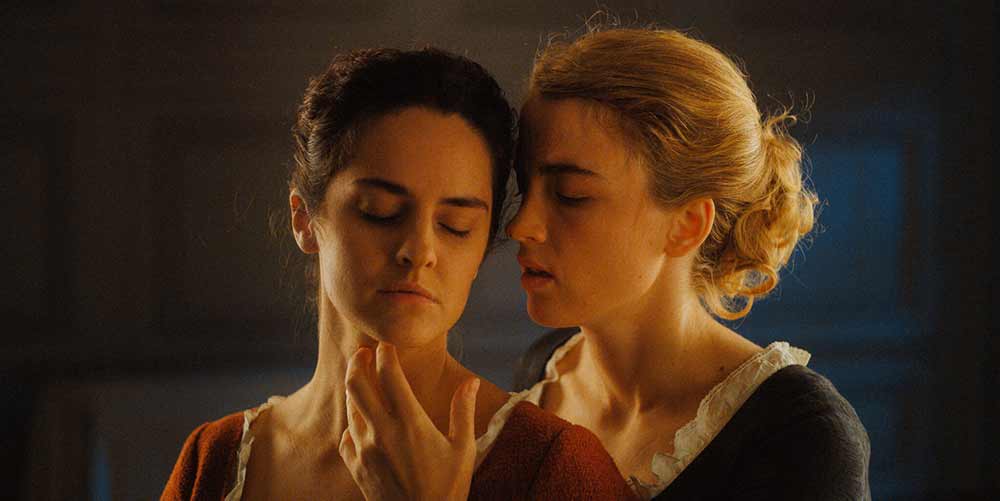
“The winner of the Cannes Best Screenplay prize, Portrait is a masterclass in structure. When I interviewed Sciamma about Girlhood, she talked about wanting to create the “desire to see a face” or “the appetite for [a] face.” Sciamma pushes this to the extreme in Portrait, creating immense suspense in our desire to see Héloīse (Adèle Haenel), the noble woman that Marianne (Noémie Merlant) has been commissioned to paint. We track Marianne on a long journey to Héloīse’s home, and then hear about Héloīse from everyone she knows. Even the first time she appears on screen, we follow her from behind, on tenterhooks for her to turn around and show us her face.” …READ MORE — AH
Read our full review of Portrait of a Lady on Fire here.
1. Mouthpiece (dir. Patricia Rozema)
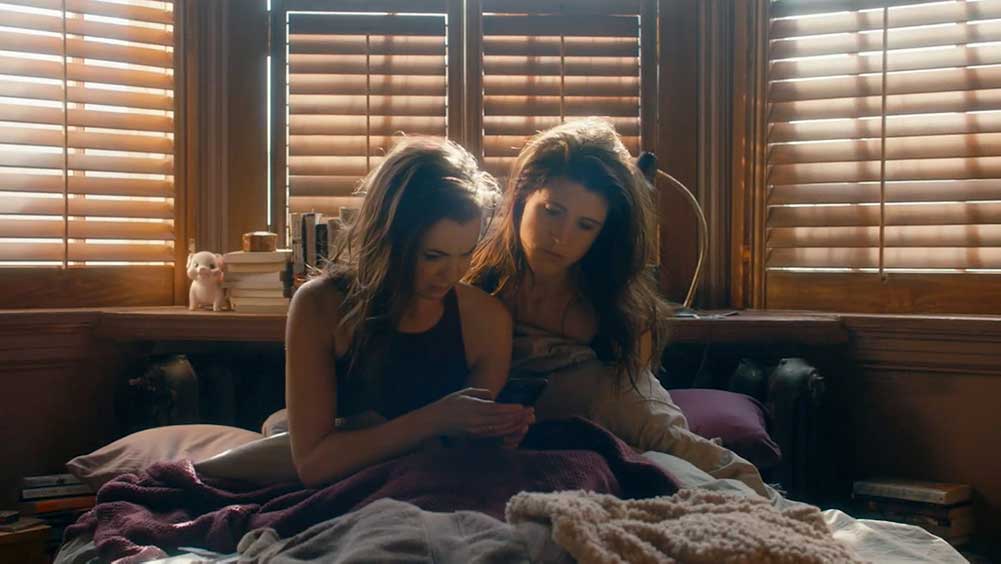
“The best movie of the year, Mouthpiece, is Canadian, set in Toronto, and written and directed by women and about women. Director Patricia Rozema (Mansfield Park, I’ve Heard the Mermaids Singing) — in collaboration with Toronto theatremakers-actors-writers Amy Nostbakken and Norah Sadava — has effortlessly adapted a piece of physical theatre into a naturalistic film that gets up close and intimate with the characters. The film’s innovative conceit is that the main character, thirty-something Torontonian Cassandra, is simultaneously played by two actors, Nostbakken and Sadava. This dual performance, where the actors sometimes mirror each other and sometimes diverge or even conflict, allows them to represent two sides of a complex woman who is constantly in conflict with herself. It’s a meditation on the things we think and the things we do, and how they can be contradictions, how every moment is charged with multiple emotions.” …READ MORE — AH
This interview features in our book, The 2019 Canadian Cinema Yearbook.

